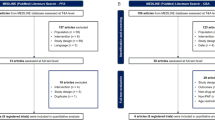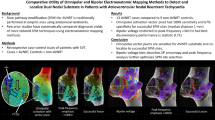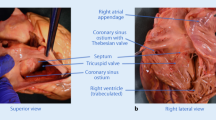Abstract
Background
Several variables have been identified as predictors for difficult or complicated transvenous lead extraction (TLE), including age and number of implanted leads, as well as patient’s age; however, a standard measure of TLE difficulty has not been described.
Objective
Total laser cycles (TLCs) delivered during laser-assisted TLE is an objective variable that could reflect the difficulty of TLE. This study investigated whether TLC is correlated with known predictors of difficult TLE.
Methods
In a retrospective study of TLE procedures using the laser sheath, we analyzed TLC delivered and compared it to established predictors of procedural failure and complications.
Results
Of 166 patients undergoing TLE, the laser sheath (SLS II or Glidelight, Spectranetics Inc.,) was used as the primary extraction sheath in 130 patients, and 100 patients had complete TLC data available. The mean age of the oldest lead (AOL) was 7.1 ± 3.2 years with a median of 6.91 (interquartile range [IQR] 0.48–16.69) years, and 1.6 ± 0.7 leads (range, 1–4) were extracted per procedure. Two thirds of procedures involved ICD leads. Clinical success was 99%, with one patient (1%) experiencing a major complication. Median TLC delivered was 1165 (IQR, 567–2062; range, 49–9522). TLC was positively correlated with AOL (r = 0.227, p = 0.023), and the combined age of leads was extracted (r = 0.307, p = 0.002). TLC was also positively correlated with number of leads extracted per procedure (ρ = 0.227, p = 0.024). There was a non-significant negative trend towards correlation between TLC and patient’s age (r = −0.112, p = 0.268).
Conclusion
TLC showed significant correlation with known predictors of difficulty during TLE using the laser sheath. TLC is an objective method to report the difficulty of TLE and could usefully be reported in future series of laser lead extractions.


Similar content being viewed by others
References
Hammill SC, Kremers MS, Kadish AH, Stevenson LW, Heidenreich PA, Lindsay BD, et al. Review of the ICD Registry’s third year, expansion to include lead data and pediatric ICD procedures, and role for measuring performance. Heart Rhythm. 2009;6(9):1397–401.
Tracy CM, Epstein AE, Darbar D, DiMarco J, Dunbar SB, Estes NA 3rd, et al. 2012 ACCF/AHA/HRS focused update of the 2008 guidelines for device-based therapy of cardiac rhythm abnormalities: a report of the American College of Cardiology Foundation/American Heart Association Task Force on Practice Guidelines and the Heart Rhythm Society. [corrected]. Circulation. 2012;126(14):1784–800.
Wilkoff BL, Love CJ, Byrd CL, Bongiorni MG, Carrillo RG, Crossley GH 3rd, et al. Transvenous lead extraction: Heart Rhythm Society expert consensus on facilities, training, indications, and patient management: this document was endorsed by the American Heart Association (AHA). Heart Rhythm. 2009;6(7):1085–104.
Voigt A, Shalaby A, Saba S. Continued rise in rates of cardiovascular implantable electronic device infections in the United States: temporal trends and causative insights. Pacing Clin Electrophysiol. 2010;33(4):414–9.
Maytin M, Epstein LM, John RM. Lead implant duration does not always predict ease of extraction: extraction sheath may be required at < 1 year. Pacing Clin Electrophysiol. 2011;34(12):1615–20.
Mazzone P, Tsiachris D, Marzi A, et al. Predictors of advanced lead extraction based on a systematic stepwise approach: results from a high volume center. Pacing Clin Electrophysiol. 2013;36(7):837–44.
Gula LJ, Krahn AD, Yee R, Skanes AC, Ghosh N, Klein GJ. Arrhythmia device lead extraction: factors that necessitate laser assistance. Can J Cardiol. 2008;24(10):767–70.
Bracke F, Meijer A, Van Gelder B. Extraction of pacemaker and implantable cardioverter defibrillator leads: patient and lead characteristics in relation to the requirement of extraction tools. Pacing Clin Electrophysiol. 2002;25(7):1037–40.
Segreti L, Di Cori A, Soldati E, et al. Major predictors of fibrous adherences in transvenous implantable cardioverter-defibrillator lead extraction. Heart Rhythm. 2014;11(12):2196–201.
Brunner MP, Cronin EM, Duarte VE, Yu C, Tarakji KG, Martin DO, et al. Clinical predictors of adverse patient outcomes in an experience of more than 5000 chronic endovascular pacemaker and defibrillator lead extractions. Heart Rhythm. 2014;11(5):799–805.
Kennergren C, Bjurman C, Wiklund R, Gabel J. A single-centre experience of over one thousand lead extractions. Europace. 2009;11(5):612–7.
Bontempi L, Vassanelli F, Cerini M, D’Aloia A, Vizzardi E, Gargaro A, et al. Predicting the difficulty of a lead extraction procedure: the LED index. J Cardiovasc Med (Hagerstown). 2014;15(8):668–73.
Brunner MP, Cronin EM, Jacob J, Duarte VE, Tarakji KG, Martin DO, et al. Transvenous extraction of implantable cardioverter-defibrillator leads under advisory—a comparison of Riata, Sprint Fidelis, and non-recalled implantable cardioverter-defibrillator leads. Heart Rhythm. 2013;10(10):1444–50.
Agarwal SK, Kamireddy S, Nemec J, Voigt A, Saba S. Predictors of complications of endovascular chronic lead extractions from pacemakers and defibrillators: a single-operator experience. J Cardiovasc Electrophysiol. 2009;20(2):171–5.
Jones SO, Eckart RE, Albert CM, Epstein LM. Large, single-center, single-operator experience with transvenous lead extraction: outcomes and changing indications. Heart Rhythm. 2008;5(4):520–5.
Byrd CL, Wilkoff BL, Love CJ, et al. Intravascular extraction of problematic or infected permanent pacemaker leads: 1994-1996. U.S. Extraction Database, MED Institute. Pacing Clin Electrophysiol. 1999;22(9):1348–57.
Wazni O, Epstein LM, Carrillo RG, Love C, Adler SW, Riggio DW, et al. Lead extraction in the contemporary setting: the LExICon study: an observational retrospective study of consecutive laser lead extractions. J Am Coll Cardiol. 2010;55(6):579–86.
Varahan S, Pretorius V, Birgersdotter-Green U. Transvenous lead extraction: a step-by-step approach. J Innov Cardiac Rhythm Manag. 2011;2:145–9.
Author information
Authors and Affiliations
Corresponding author
Rights and permissions
About this article
Cite this article
Elsaid, O., O’Sullivan, D.M., Zweibel, S. et al. Total laser cycles—a measure of transvenous lead extraction difficulty. J Interv Card Electrophysiol 53, 383–389 (2018). https://doi.org/10.1007/s10840-018-0422-3
Received:
Accepted:
Published:
Issue Date:
DOI: https://doi.org/10.1007/s10840-018-0422-3




